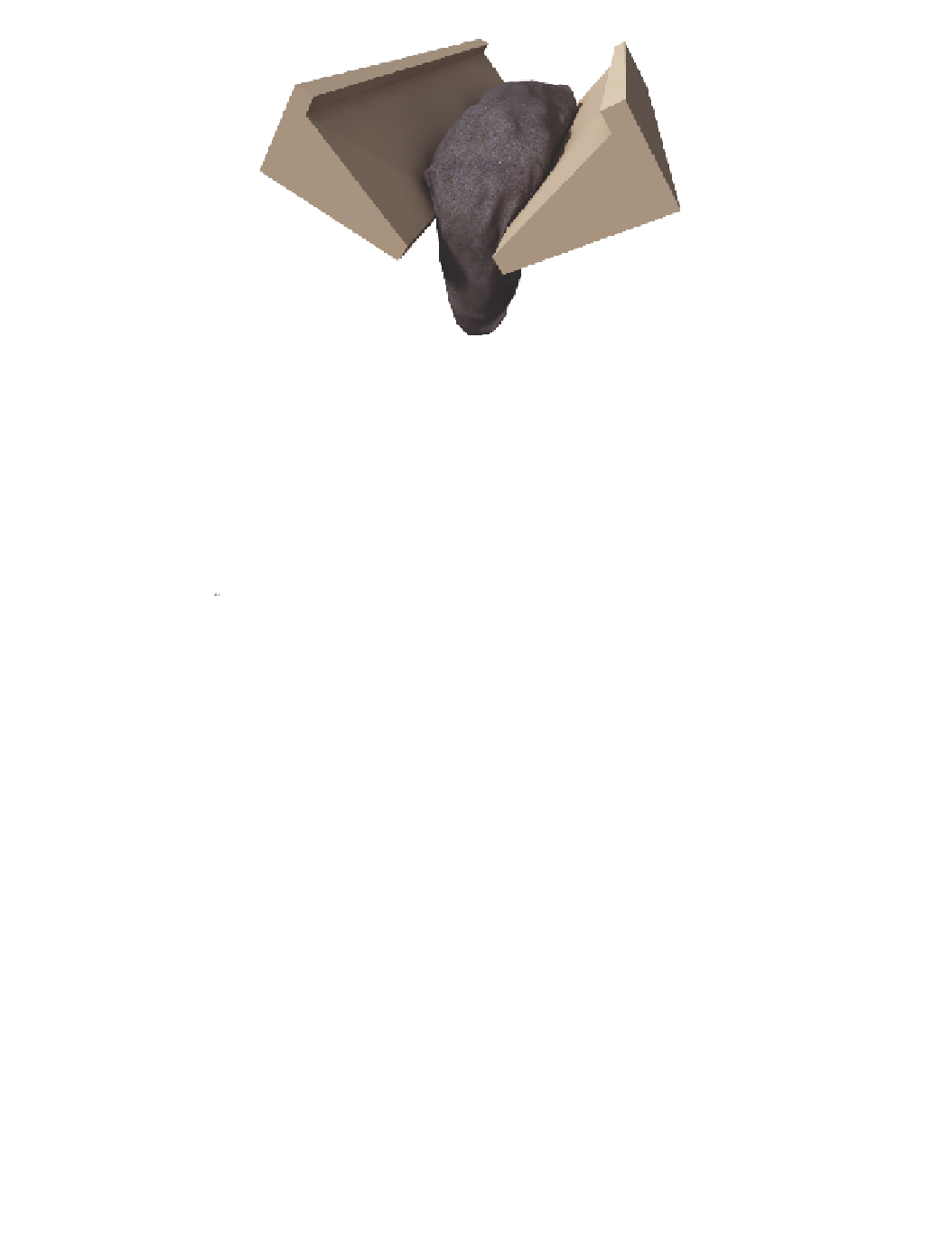Geoscience Reference
In-Depth Information
Figure 6.2
Sketch of a partially impeded geotextile container during the drop.
6.2.4 Degree of filling
The ultimate shape of a geotextile container depends mainly on the degree of filling;
theoretically 100% filling will result in a circular container. This manual, defines the
degree of filling of a geotextile container as the relationship between the actual surface
of cross-section of the container (perpendicular to the length) and its largest possible
surface of cross-section (a circle). The formula is as follows:
4
A
π
(6.1)
⋅⋅
f
=
S
where:
f
=
degree of filling [
−
];
A
=
filled cross-sectional area of the geotextile container [m
2
];
S
=
circumference of the geotextile container [m].
In Figure 6.3 the circumference is shown as a function of the degree of filling and
the cross-section. The grey shaded region shows the degree of filling between 20%
and 80%. This region is the most common for geotextile containers and tubes. From
20 to 50% are usual values for containers, from 50 to 80% for tubes.
The degree of filling of a geotextile container is defined in the literature in two
different ways. The common way (as shown above) is expressed as a function of the
circumference and the filled cross-sectional area of the geotextile container, but some-
times it may be defined as a function of the volume of the split barge. It should be
noted that these two definitions differ significantly. Thus, a degree of filling of 46%
can, according to the first definition, correspond to a degree of filling of 80% based
on the second definition. This difference is due to the shape of the split hopper bin in
cross-section. When in literature fill percentages of 70% and higher are stated, one
can assume that the degree of filling is calculated in relation to the volume of the split
barge and not according to formula 6.1.






